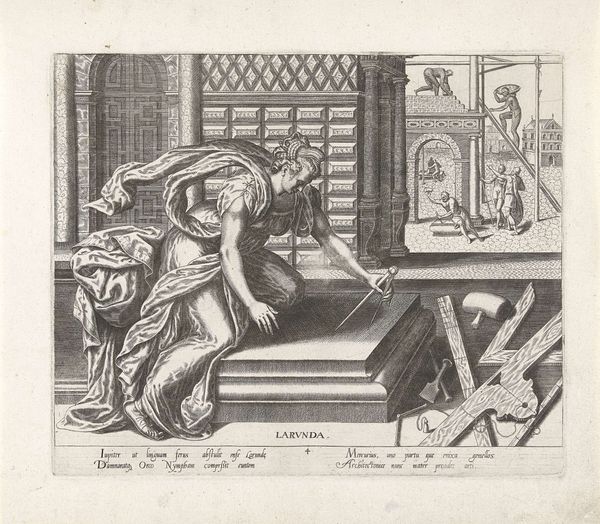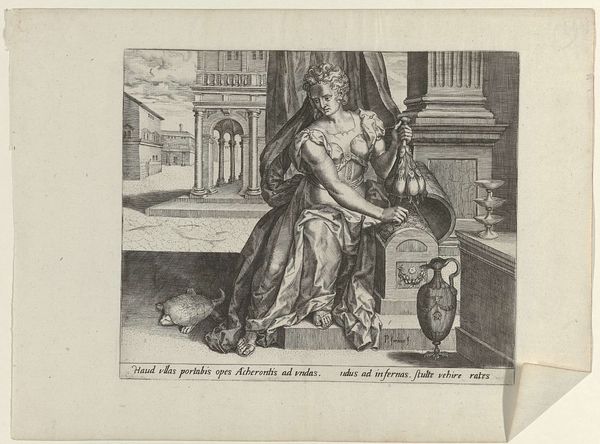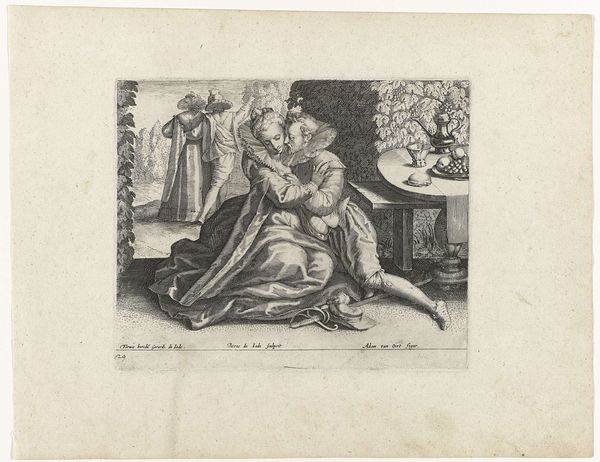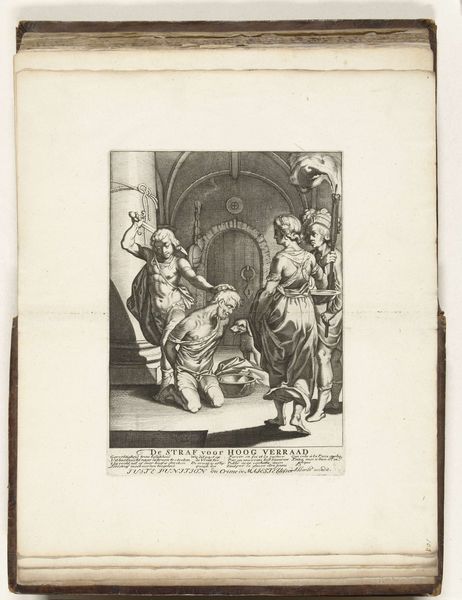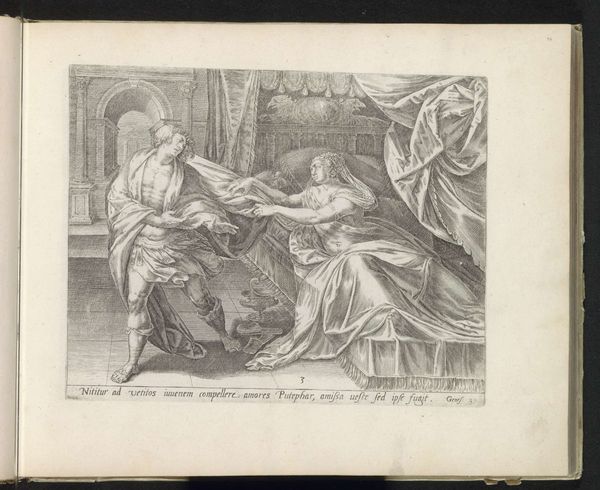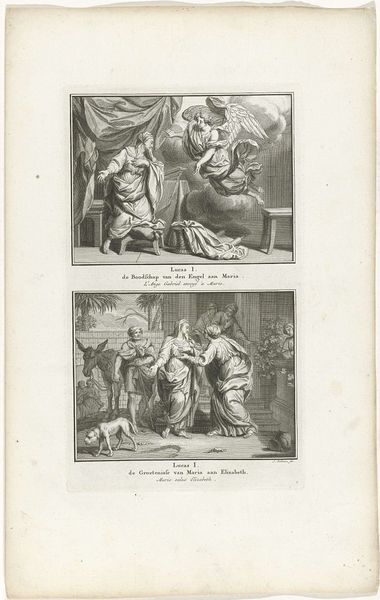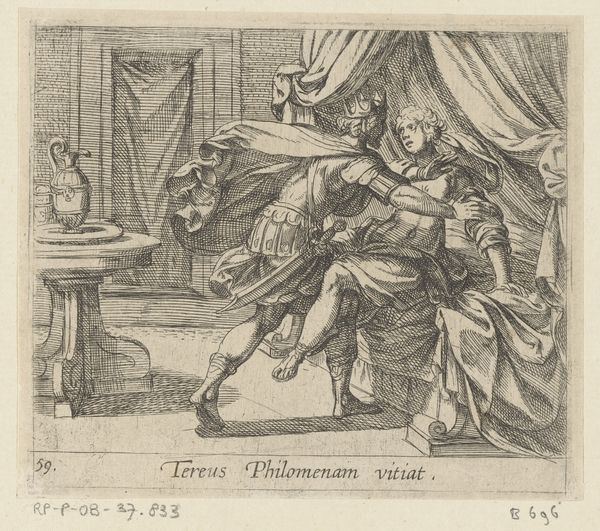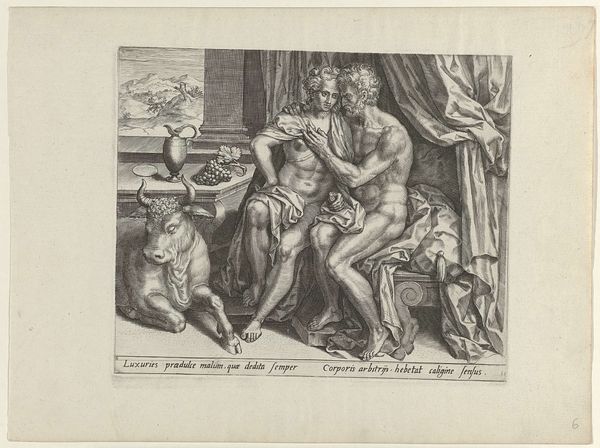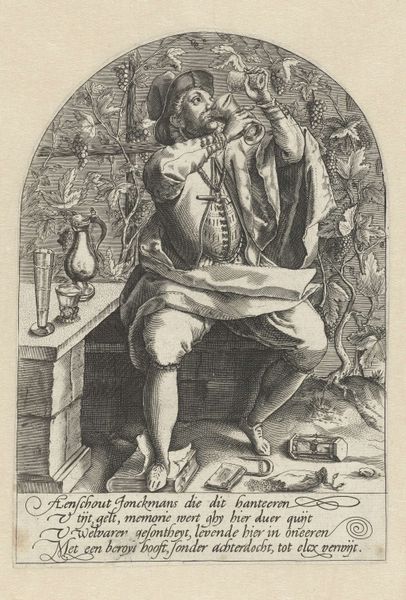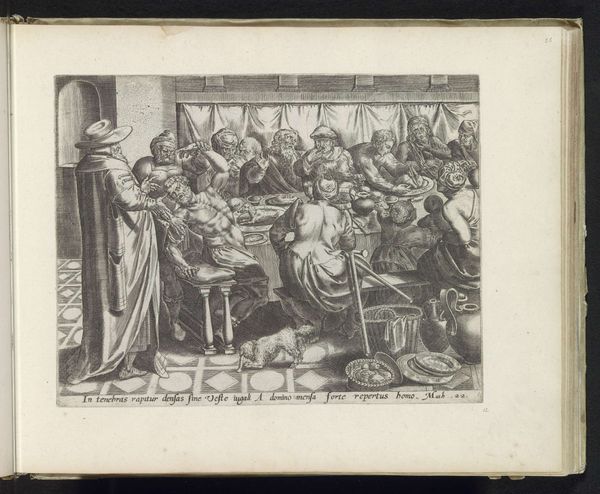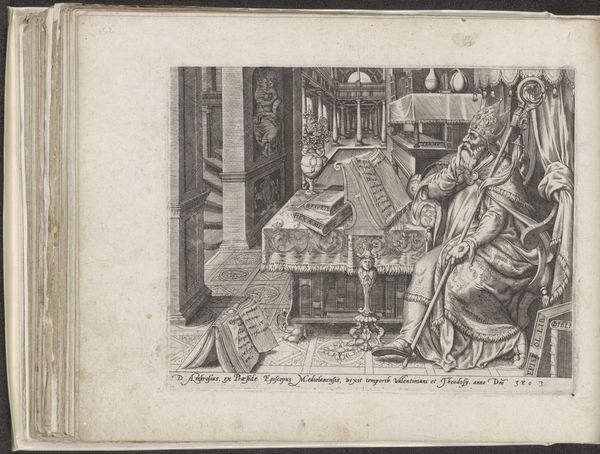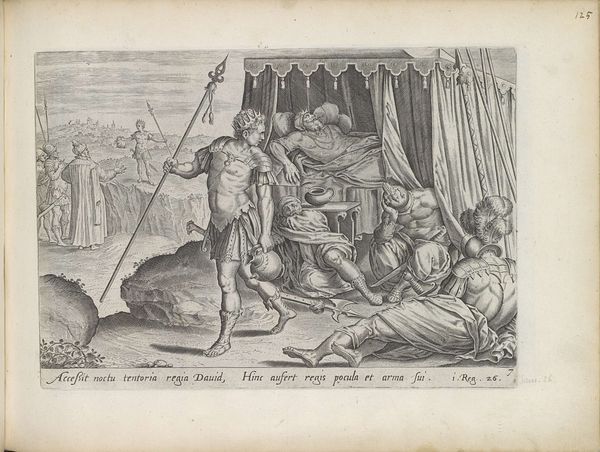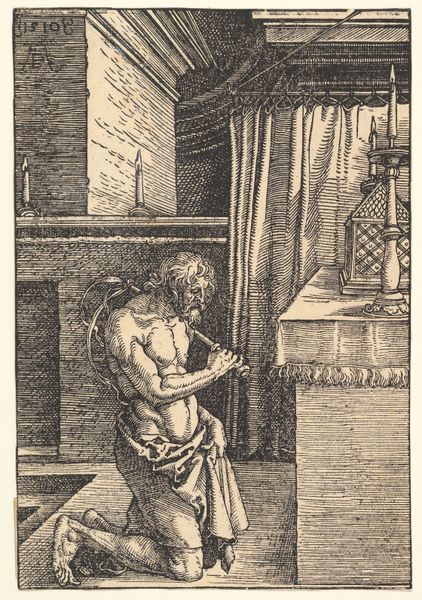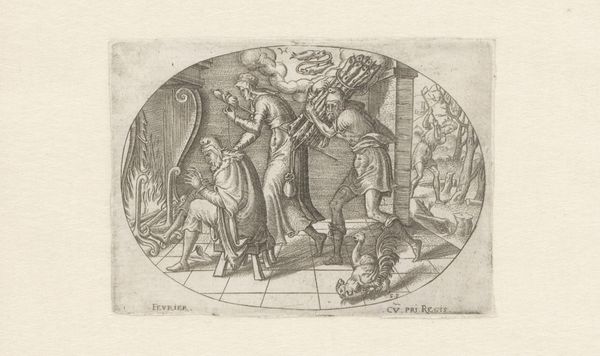
print, engraving
#
portrait
#
allegory
# print
#
pen sketch
#
old engraving style
#
mannerism
#
history-painting
#
engraving
Dimensions: height 201 mm, width 259 mm
Copyright: Rijks Museum: Open Domain
Curator: Editor: This engraving, titled "Hoogmoed" and created sometime between 1550 and 1625, is attributed to Pieter Jalhea Furnius. It looks like an allegory, with an elegantly dressed woman gazing into a mirror, accompanied by a peacock. The overall composition seems quite theatrical. What do you see in this piece? Curator: The engraving's power resides primarily in its structured arrangement and detailed execution. Notice how the composition leads the eye: from the elaborate drapery, across the woman's figure, to the radiating peacock feathers, and finally towards the architectural vista in the background. These elements are meticulously rendered. Consider, for example, the textures achieved through varying densities of line. Do you observe how this technique models forms and creates a sense of depth? Editor: I do see that now, yes! It’s almost like a stage set, the way each element seems carefully placed. The density of the lines creating light and shadow makes the woman’s dress appear quite tactile. Curator: Precisely. Now, contemplate the symbolic interplay of elements. The mirror traditionally represents vanity. How does the formal rendering of the peacock, with its expansive tail, amplify this symbolism? Its ostentatious display is rendered through precise lines that mimic its display. Editor: It emphasizes the woman’s self-absorption. It’s all about surface and presentation, wouldn’t you say? So, the composition reflects and enhances the meaning. Curator: Precisely! The formal elements of the engraving aren't merely decorative; they’re intrinsic to its allegorical message. The artist uses structure and texture to deliver meaning. Editor: I now see that studying the line work, textures and symbolic arrangement does give valuable clues for deciphering an image. Curator: Yes! Careful observation leads to insightful interpretation.
Comments
No comments
Be the first to comment and join the conversation on the ultimate creative platform.
